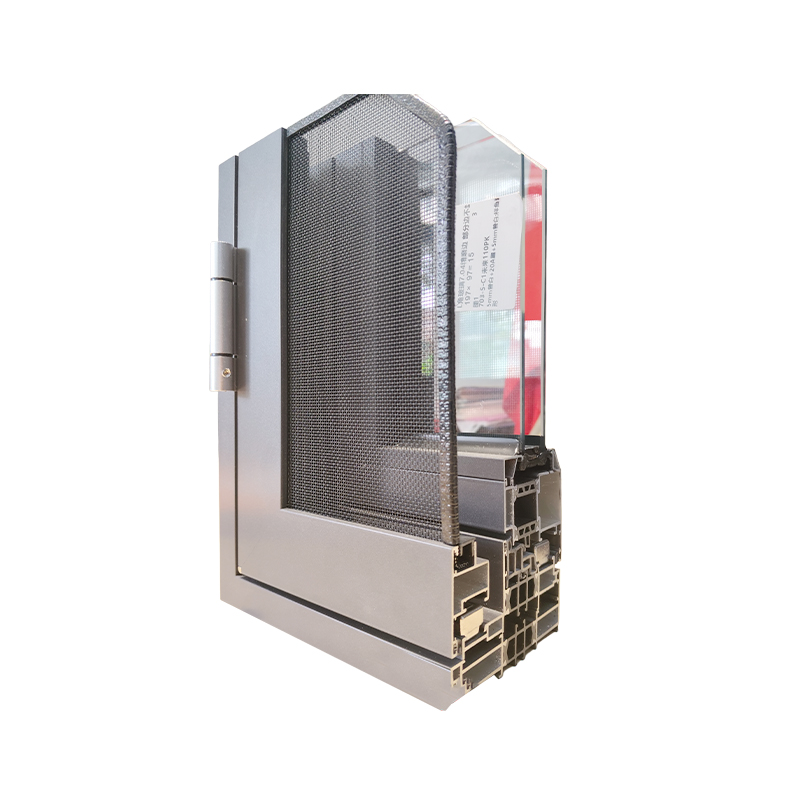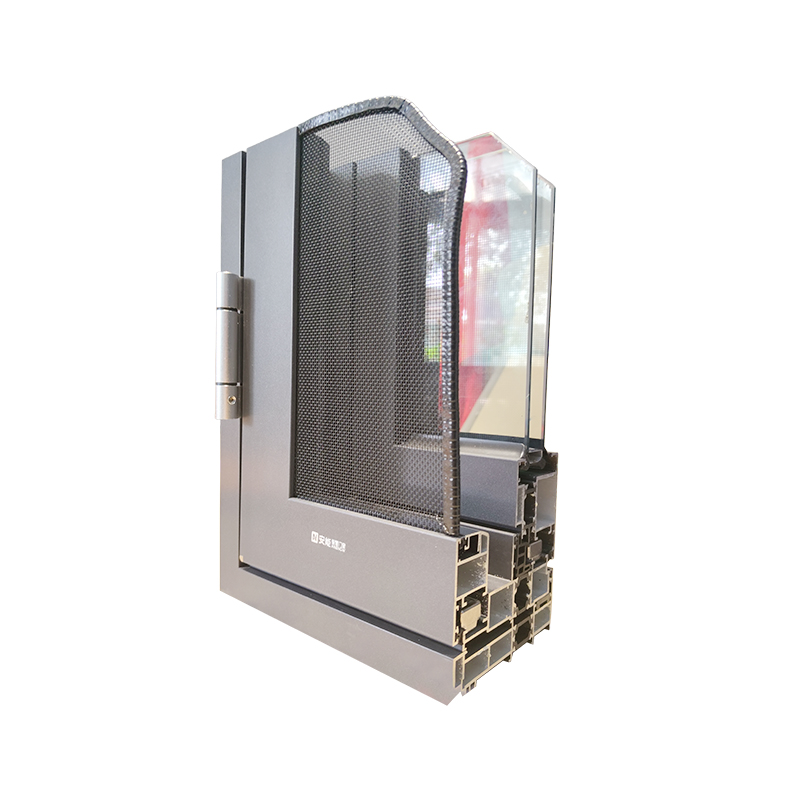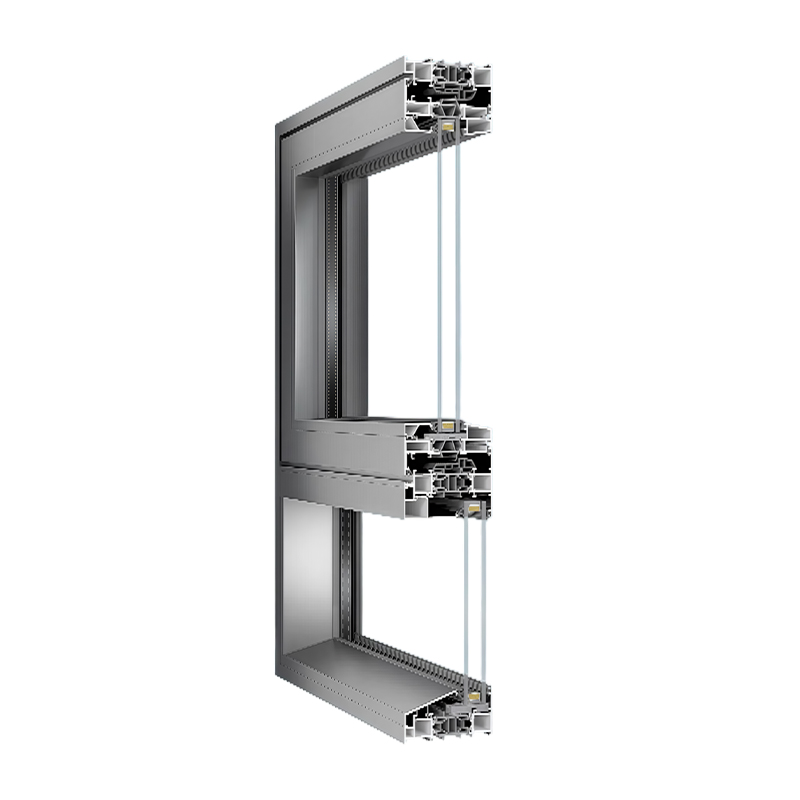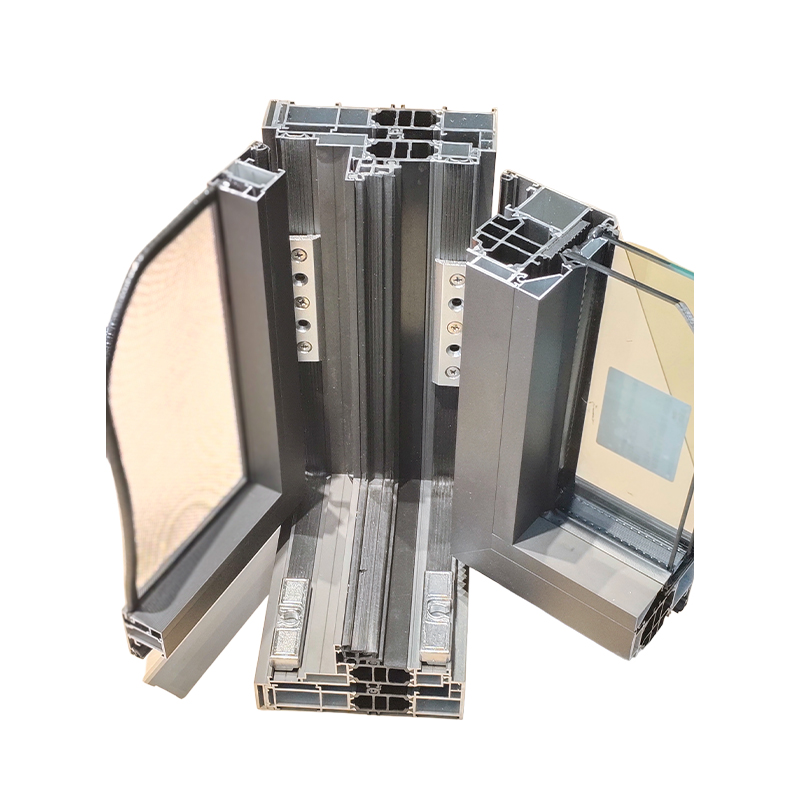How does the coating adhesion of ceramic electrophoretic coating casement window change in high temperature and high humidity environment?
Release Time : 2025-10-24
In high-temperature, high-humidity environments, the adhesion of ceramic electrophoretic coating casement windows is influenced by a combination of factors, with variations closely related to the coating material properties, process parameters, and environmental conditions. Ceramic electrophoretic coating uses an electric field to deposit charged coating particles onto the substrate surface in a targeted manner, forming a uniform, dense coating with excellent corrosion resistance and decorative properties. However, when casement windows are exposed to high-temperature, high-humidity environments for extended periods, the interfacial bonding strength between the coating and the substrate may change due to physical and chemical reactions.
High temperatures accelerate the thermal motion of polymer chains in the coating, weakening intermolecular forces and making the coating's internal structure more porous. Furthermore, water vapor molecules in hot and humid conditions are small and highly permeable, allowing them to penetrate the coating's micropores and reach the substrate surface, triggering electrochemical corrosion. Improper substrate pretreatment, such as residual oxides, oil, or soluble salts, can preferentially absorb moisture and expand in hot and humid environments, generating internal stress and further weakening coating adhesion. For example, a study showed that coating adhesion on substrates that were not thoroughly degreased in high-temperature, high-humidity environments decreased by over 30% compared to substrates that had been properly treated.
Coating thickness also significantly affects adhesion changes. Overly thick coatings can hinder solvent evaporation, leading to pinholes formed after residual solvent vaporizes at high temperatures in the underlying layer, providing penetration channels for corrosive media. Overly thin coatings, however, lack permeability and are unable to prevent the intrusion of media in hot and humid environments. Experiments have shown that when the coating thickness of ceramic electrophoretic coating casement windows is controlled within a reasonable range, its resistance to humidity and heat is optimized, and the rate of adhesion degradation can be reduced. Furthermore, the ratio of pigment to resin (pigment-to-binder ratio) in the coating also affects adhesion. Excessively high pigment-to-binder ratios can increase coating brittleness, making it prone to cracking and flaking during heat and humidity cycles.
Electrophoretic process parameters play a decisive role in coating adhesion. Excessively high deposition voltages can lead to uneven deposition of coating particles, resulting in a loose structure. While post-treatment bonding can improve adhesion, it cannot completely compensate for structural defects. For example, when the voltage exceeds a certain value, surface peeling after coating adhesion testing is significantly increased. Deposition times that are too long or too short are also detrimental. The former can lead to stress accumulation within the coating, while the latter can reduce protective performance due to excessively thin coatings. Optimizing process parameters, such as controlling the voltage within a reasonable range and adjusting the deposition time, can significantly improve the coating's adhesion stability in high-temperature and high-humidity environments.
Post-processing is crucial for maintaining long-term coating adhesion. During the sintering process, stress generated by binder shrinkage is not fully released, increasing the risk of coating cracking. Low-temperature, slow sintering or the addition of a stress buffer layer can effectively reduce internal stress in the coating and improve its resistance to moisture and heat. Furthermore, controlling the coating's surface energy is crucial. By adjusting the coating formulation or adding additives, the coating's surface energy can be lowered, minimizing water vapor adsorption and thus maintaining stable adhesion.
Environmental simulation tests show that adhesion degradation of ceramic electrophoretic coating casement windows under high-temperature and high-humidity cycling conditions primarily occurs in the initial stages and then stabilizes. This is due to the coating's gradual development of a "self-healing" mechanism in a hot and humid environment. Microcracks in the coating hydrate under the action of moisture, partially restoring bonding strength. However, if environmental parameters exceed the coating's tolerance range—for example, if excessively high temperatures cause thermal decomposition, or if excessive humidity causes severe corrosion—adhesion will irreversibly decline.
To improve the adhesion of ceramic electrophoretic coating casement windows in high-temperature and high-humidity environments, coordinated improvements are required in material selection, process optimization, and environmental control. Selecting ceramic electrophoretic coatings with excellent heat and humidity resistance, optimizing substrate pretreatment, electrophoretic parameters, and post-treatment processes, and controlling temperature and humidity fluctuations in the operating environment can significantly extend the coating's service life, ensuring the casement windows maintain their excellent protective and decorative properties over the long term.







